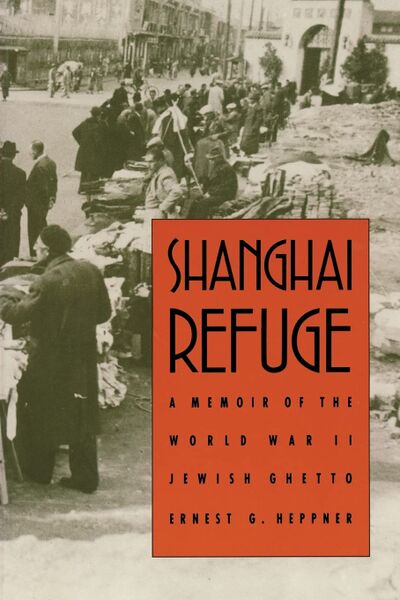File:1995 Heppner.jpg

Original file (907 × 1,360 pixels, file size: 113 KB, MIME type: image/jpeg)
Title
Ernest G. Heppner. Shanghai Refuge: A Memoir of the World War II Jewish Ghetto (1995)
Abstract
"The unlikely refuge of Shanghai, the only city in the world that did not require a visa, was buffeted by the struggle between European imperialism, Japanese aggression, and Chinese nationalism. Ernest G. Heppner's compelling testimony is a brilliant account of this little-known haven ... Although Heppner was a member of a privileged middle-class Jewish family, he suffered from the constant anti-Semitic undercurrent in his surroundings. The devastation of "Crystal Night" in November 1938, however, introduced a new level of Nazi horror and ended his comfortable world overnight. Heppner and his mother used the family's resources to escape to Shanghai ... Heppner was taken aback by experiences on the ocean liner that transported the refugees to Shanghai: he was embarrassed and confounded when Egyptian Jews offered worn clothing to the Jewish passengers, he resented the edicts against Jewish passengers disembarking in any ports on the way, and he was unprepared for the poverty and cultural dislocation of the great city of Shanghai. Nevertheless, Heppner was self-reliant, energetic, and clever, and his story of finding niches for his skills that enabled him to survive in a precarious fashion is a tribute to human endurance ... In 1945, after the liberation of China, Heppner found a responsible position with the American forces there. He and his wife, whom he had met and married in the ghetto, arrived in the United States in 1947 with only eleven dollars but boundless hope and energy ... Heppner's account of the Shanghai ghetto is as vivid to him now as it was then. His admiration for his new country and his later success in business do not, however, obscure for him the shameful failure of the Allies to furnish a refuge for Jews before, during, and after the war."--Pu
About the Author
Born August 4, 1921 in Breslau, Germany, Ernest Heppner was one of three children born to a Jewish family in the commercial city of Breslau, which had one of the largest Jewish communities in Germany. His father, a World War I veteran, owned a factory that made matzah, the unleavened bread used during the Jewish holiday of Passover. Ernest was 12 when Hitler took power in 1933 ... 1933-39: Ernest often got in trouble at school because people called him names. "Christ-killer" and "your father kills Christian babies for Passover" were common taunts. Many thought the Nazis were a passing political fad but by 1935 their laws were menacing. Signs appeared declaring, "Jews are forbidden." In 1938, after his synagogue was burned (during Kristallnacht), his family realized they had to flee Germany. Since his family could only get two tickets, Ernest and his mother boarded a ship for Asia, leaving their family behind ... 1940-44: Ernest ended up in Japanese-controlled Shanghai, the only place refugees could land without a visa. There, as a volunteer driving a truck for the British army's Shanghai Volunteer Force, he got meals and was better off than many other refugees. After Pearl Harbor, in December 1941, conditions among the city's refugees worsened--American relief funds, the refugees' lifeline, could not reach Shanghai. In 1943, under pressure from Germany, the Japanese set up a ghetto ... Ernest spent two years in the Shanghai ghetto before the city was liberated in 1945. After the war, he worked for the U.S. Air Force in Nanking, China, for several years, and later immigrated to the United States.
File history
Click on a date/time to view the file as it appeared at that time.
| Date/Time | Thumbnail | Dimensions | User | Comment | |
|---|---|---|---|---|---|
| current | 12:03, 20 February 2022 |  | 907 × 1,360 (113 KB) | Gabriele Boccaccini (talk | contribs) |
You cannot overwrite this file.
File usage
There are no pages that use this file.